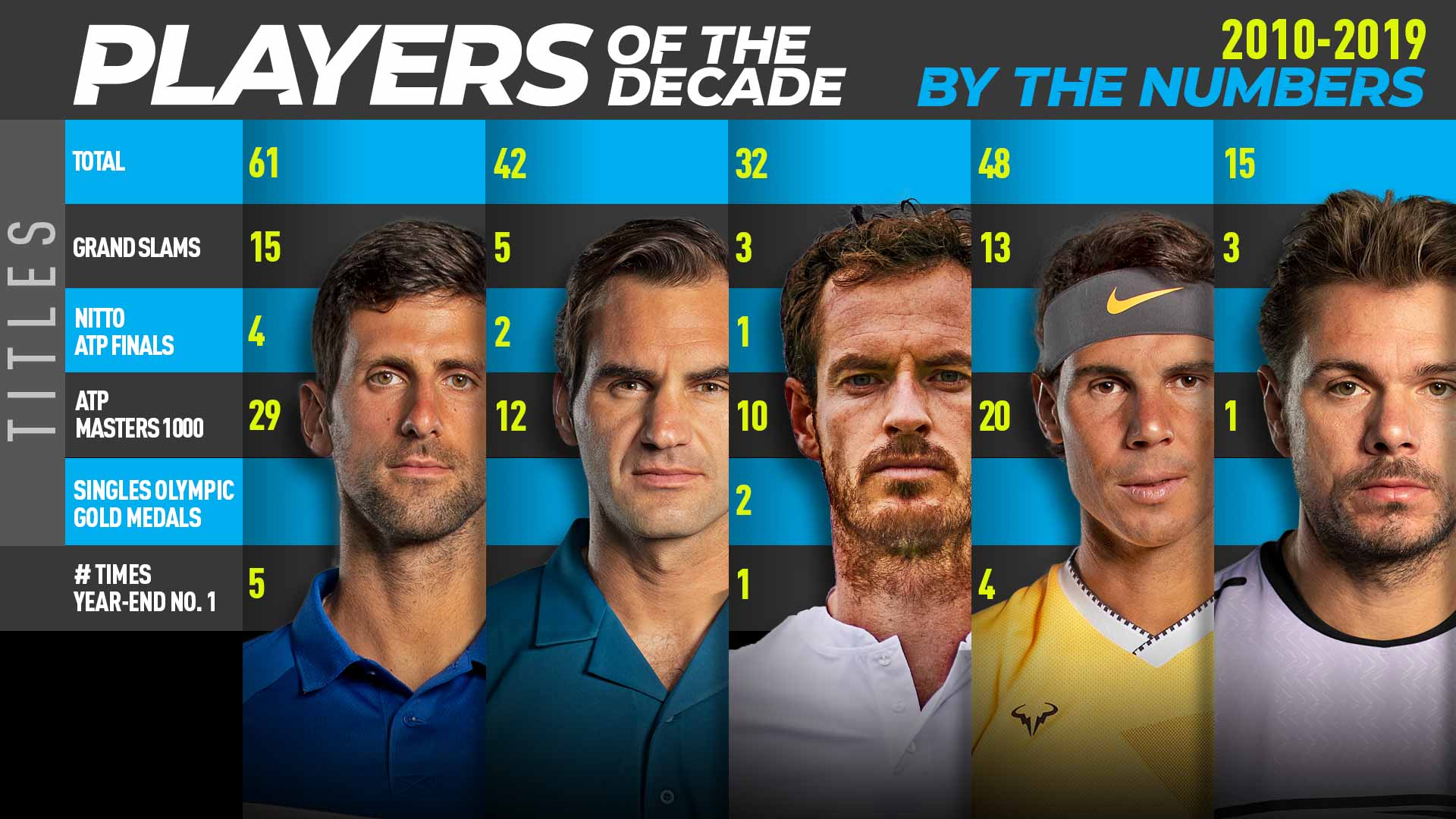Players Of The Decade: Stan Wawrinka
Players Of The Decade: Stan Wawrinka
To continue our Decade In Review series, ATPTour.com completes our look at the five players of the decade with Stan Wawrinka.
Stan Wawrinka must be viewing the passing of this decade with torn emotions. He is pleased to have recovered well from two 2017 knee surgeries and be nearing the level that won him three Grand Slam titles and an ATP Masters 1000 event during the past 10 years.
But another part of Wawrinka likely wishes this prolific and unexpected decade of on-court greatness, in which he challenged the Big Four, could go on forever.
In December 2009, Wawrinka, then 24 years old, was No. 21 in the year-end ATP Rankings. He had gone 1-5 in tour-level finals and, although he cracked the Top 10 for five weeks in 2008, consistency remained a weakness for the still-developing, yet already barrel-chested Wawrinka, who has long owned one of the finest one-handed backhands in the sport.
In April 2013, however, Wawrinka, frustrated by his inability to beat the best – before 2013, he was 7-39 against the Big Four – paired with former World No. 2 Magnus Norman, who had already helped Robin Soderling, another mid-career power hitter, ascend to the top.

Fast forward to January 2014 at the Australian Open, and “Stan The Man” had arrived. The Big Four had won 16 consecutive major titles, but Wawrinka beat Djokovic in the quarter-finals, Tomas Berdych in the semi-finals and No. 1 Nadal in the final for his first Grand Slam title.
Wawrinka’s overpowering one-handed backhand and improved mental strength, along with his willingness to not be satisfied with a Top 20 career, helped him beat the best. “I never expect to win a Grand Slam. I never dream about that because for me, I was not good enough to beat those guys,” Wawrinka said.
“I talk a lot with Magnus, who has been in that situation, to play a final. He told me it was important not to think about the result but think about the way you want to play, the way you want to win every point.”
The Swiss pulled off the unexpected three months later as well, beating Roger Federer in the Rolex Monte-Carlo Masters final for his first Masters 1000 title. And more Big Title glory came on the clay in 2015, when Wawrinka, with his plaid shorts, won his second major in as many years and denied Djokovic the elusive Roland Garros crown.

In 2016, Wawrinka’s major championship streak stretched to three as he again beat Djokovic in a Grand Slam final and continued to challenge the Big Four’s reign at the biggest tournaments. The Swiss improved to 3-0 against World No. 1s in major finals; 0-16 everywhere else.
“If you want to beat the No. 1 player in the world, you have to give everything,” Wawrinka said. “You have to accept to suffer and you have to almost enjoy to suffer.”
From January 2014 through mid-September 2016, Wawrinka won 11 consecutive finals, and from 2013-16, he qualified for the Nitto ATP Finals four consecutive times.
The 2017 season brought another Roland Garros final (l. to Nadal), but by August, Wawrinka could no longer manage his worsening left knee. After Wimbledon, he shut down his season and underwent two surgeries.
His comeback, like most, has been loaded with stops and starts, good weeks and bad days. But in 2019, Wawrinka rekindled his glory days more than once. He made the Rotterdam final (l. to Monfils), his first title match in nearly two years, and the final in Antwerp (l. to Murray).
Players Of The Decade: Novak Djokovic
At Grand Slams, Wawrinka particularly showed that he’s back. He beat Greece’s Stefanos Tsitsipas in five hours, nine minutes, the fourth-longest match in Roland Garros history, to make the quarter-finals (l. to Federer), and he made his 17th Slam quarter-final at the US Open (l. to Medvedev).
Wawrinka never stretched the Big Four to the Big Five, but he wasn’t interested in such labels and humbly deflected the notion that he belonged in the same category as Federer, Djokovic, Nadal and Murray. At 34 and with three surgeries behind him (right knee, 2007), his most consistent seasons might stay in the past. But doubt him at a big event, and Wawrinka, one of the best big-match players of this decade, might soon you have regretting that decision.

